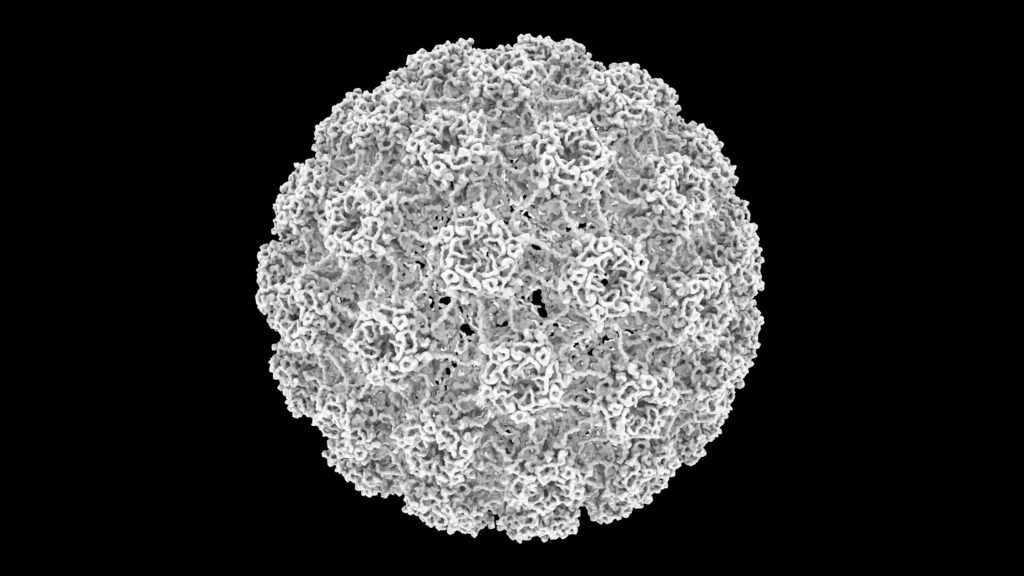Penn State researchers on the study said this raises the possibility that human papillomavirus (HPV) may also be transferable by blood in humans.
According to the Centers for Disease Control and Prevention, HPV is the most common sexually transmitted disease in humans, with an estimated 79 million individuals infected in the United States alone. While HPV is often harmless and goes away on its own, it can sometimes result in genital warts or progress to cervical or oral cancer.
Jiafen Hu, assistant professor of pathology and laboratory medicine at Penn State College of Medicine, said the team’s results suggest more research is needed to determine whether HPV can be spread through blood in humans, specifically through blood transfusions.
“People who are receiving blood transfusions typically have immune systems that aren’t working optimally, so their systems are more vulnerable,” Hu said. “We might want to think about adding HPV to the list of viruses for which blood donations are screened, as well as researching whether the typical viral load of HPV in human blood would be sufficient to cause infection.”
The results were recently published in the journal Emerging Microbes & Infections.
The study came about after an observation made in 2005 prompted one of the study authors to question how HPV is transmitted.
“Some years ago, researchers were looking at blood samples from a group of HIV-positive children, and as they were testing those samples, they found that some of them were also positive for HPV,” Hu said. “Because these children were so young, it prompted the question of whether the virus could have come from blood transfusions, which some of the children had undergone.”
While HPV is specific to humans and cannot be tested directly in animal models, the researchers said there are several different strains of papillomavirus that do exist in animals and can be a good approximation of how HPV may work in humans.
The researchers used two of these animal models for several experiments, including the Cottontail Rabbit Papillomavirus model, which the researchers said is considered to be the “gold standard” for studying HPV-related infections and diseases.
First, the researchers injected virus into the bloodstream of the rabbit. They monitored the rabbits, and after four weeks, noticed tumors on the animals, which Hu said demonstrated that the virus had traveled through the bloodstream and caused an infection.
Because their first experiment used a fairly large amount of the virus — larger than would be present in a normal infection — the researchers repeated the experiment with a five-fold reduction of the virus. The tumors once again appeared, this time on 18 out of 32 sites on the animals.
“We were able to show that the virus in the blood caused tumors, but what about blood transfusions?” Hu said. “People receiving a transfusion may only get a very small amount of the virus. To simulate this, we injected the virus into one animal, took 10 milliliters of blood and transfused it into a second animal. We still saw tumors.”
While the rabbit model showed that the virus could travel through the bloodstream to cause infections in the skin, Hu said the question remained as to whether it could cause infections in mucous membranes, like the cervix.
The researchers repeated the experiments in a mouse model and found that not only did they detect the virus in mucous membranes like the tongue and genitals, but they also found it in the stomach. Hu noted that this was a significant finding because people with cancer are sometimes found to have papillomavirus sequences in their stomach and other internal organs.
Hu said that while HPV does not cause health problems for every person who becomes infected with the virus, it is still important to know whether or not it can be spread by blood.
“We know that HPV is common and that not everyone who gets it is going to get cancer,” Hu said. “The tricky part is that a lot of people who are carrying HPV and are asymptomatic still have the potential to spread the virus. If a person is getting a blood transfusion because of one health issue, you don’t want to accidentally add another on top of that.”
Nancy M. Cladel, Penn State; Pengfei Jiang, Wenzhou Medical University; Jingwei J. Li, Penn State; Xuwen Peng, Penn State; Timothy K. Cooper, National Institute of Allergy and Infectious Diseases; Vladimir Majerciak, National Cancer Institute; Karla K. Balogh, Penn State; Thomas J. Meyer, Frederick National Laboratory for Cancer Research; Sarah A. Brendle, Penn State; Lynn R. Budgeon, Penn State; Debra A. Shearer, Penn State; Regina Munden, Penn State; Maggie Cam, National Cancer Institute; Raghavan Vallur, Penn State; Neil D. Christensen, Penn State; and Zhi-Ming Zheng, National Cancer Institute, also participated in this work.
The National Cancer Institute, National Institutes of Health, National Institute of Allergy and Infectious Diseases and the Jake Gittlen Memorial Golf Tournament helped support this research.
About Penn State College of Medicine
Located on the campus of Penn State Health Milton S. Hershey Medical Center in Hershey, Pa., Penn State College of Medicine boasts a portfolio of nearly $100 million in funded research. Projects range from development of artificial organs and advanced diagnostics to groundbreaking cancer treatments and understanding the fundamental causes of disease. Enrolling its first students in 1967, the College of Medicine has more than 1,700 students and trainees in medicine, nursing, the health professions and biomedical research on its two campuses.
scraped from https://www.newswise.com/articles/papillomaviruses-may-be-spread-by-blood


